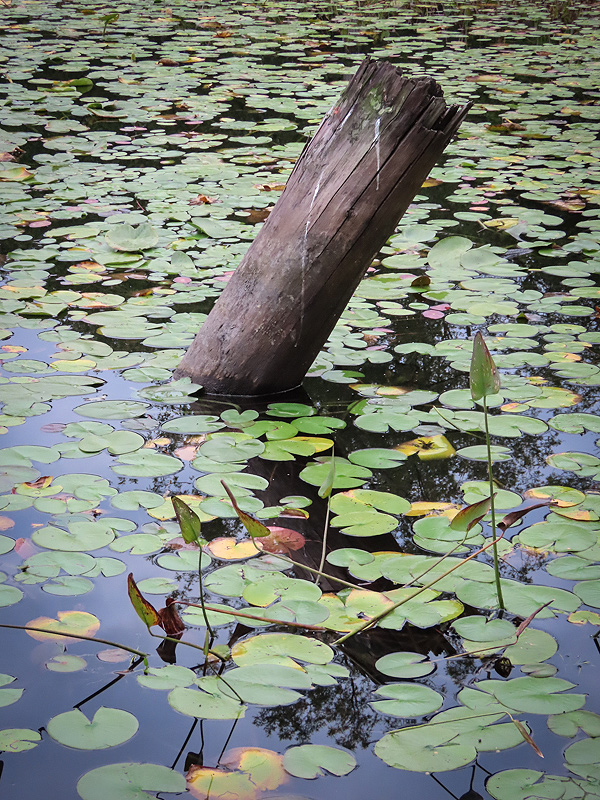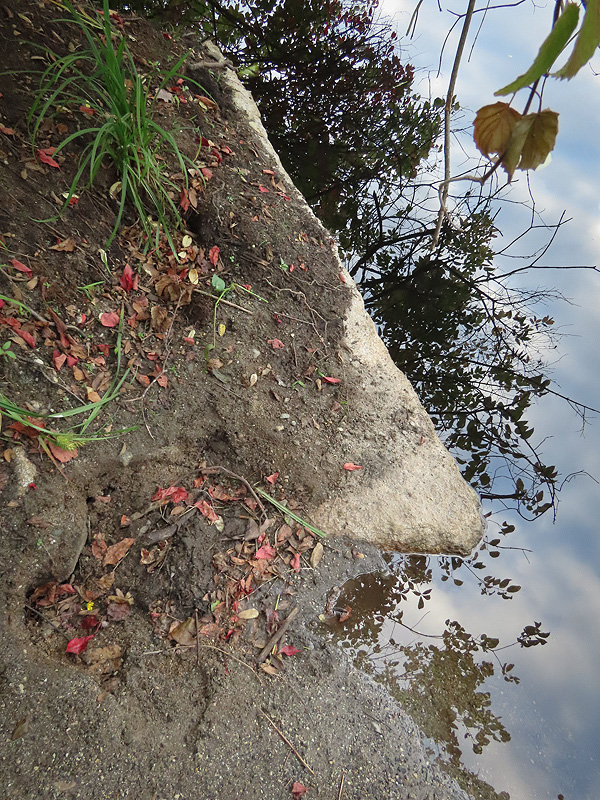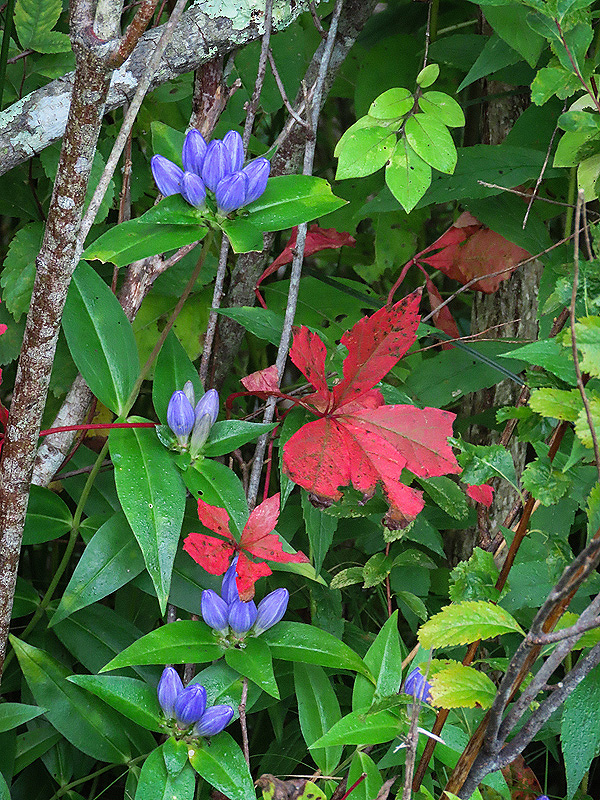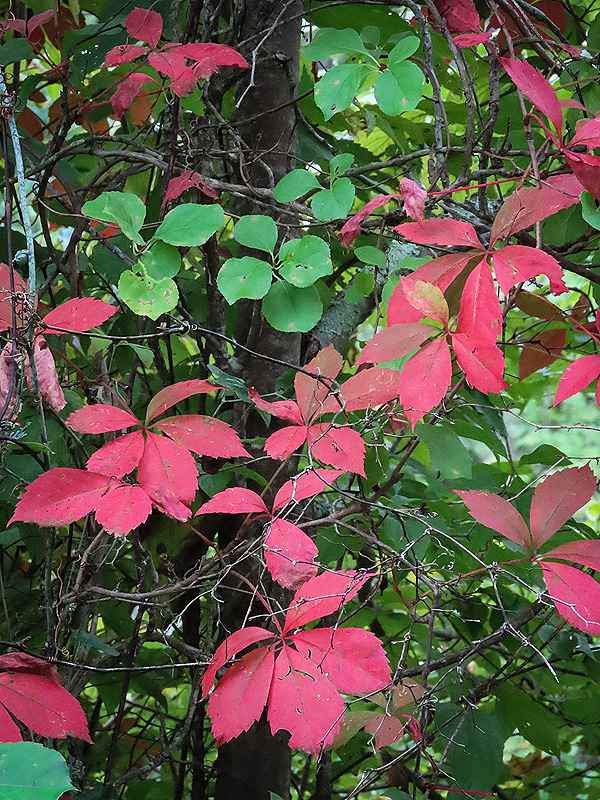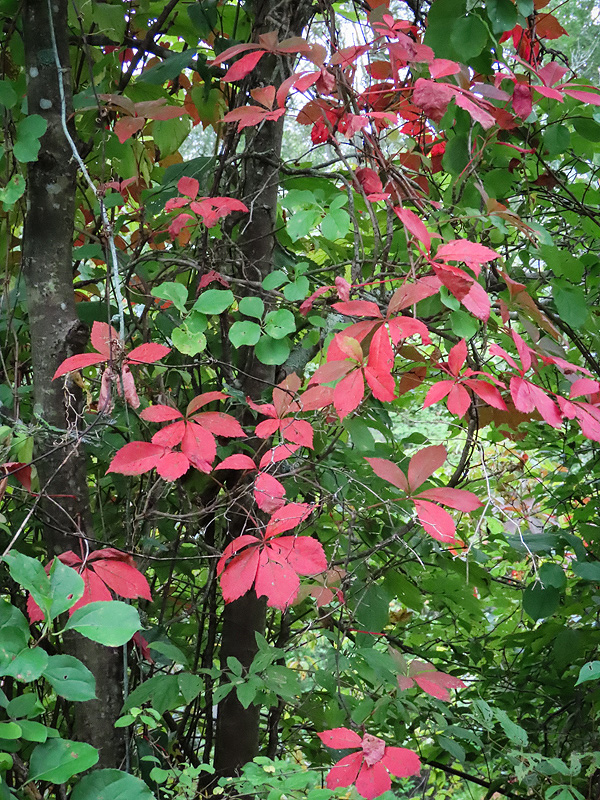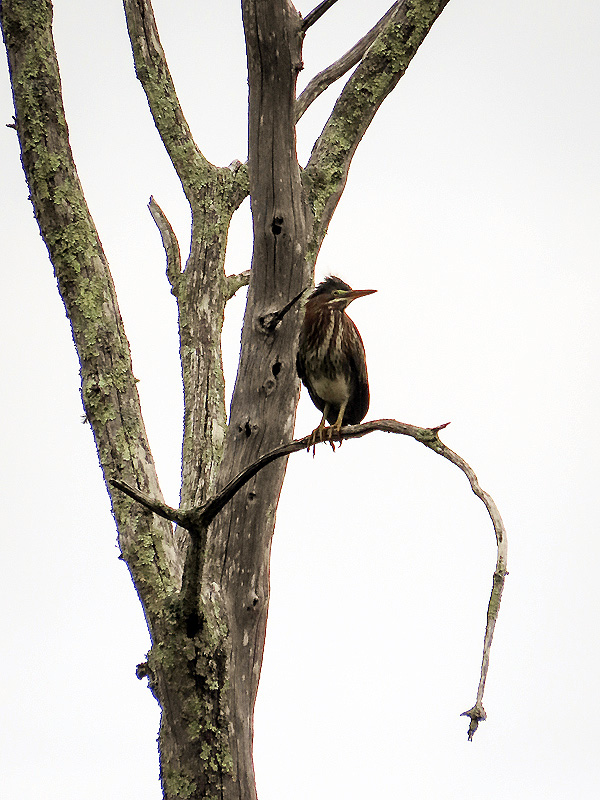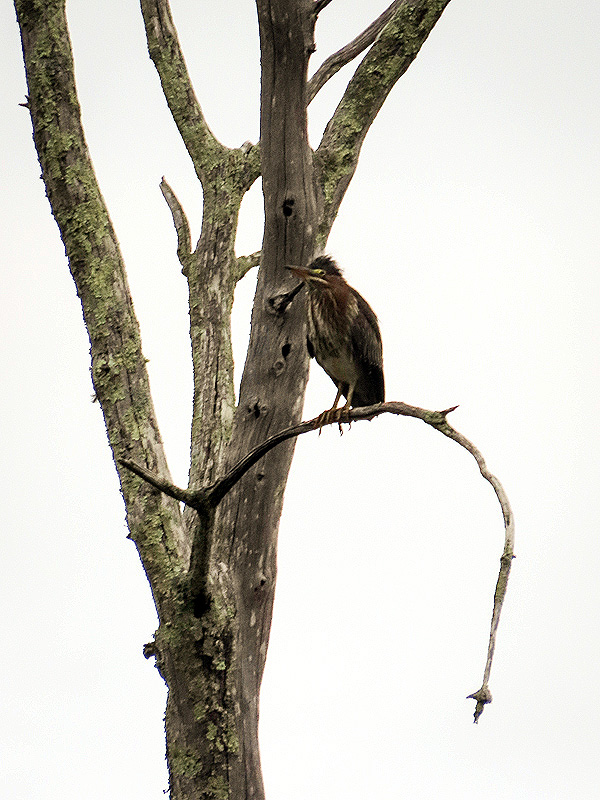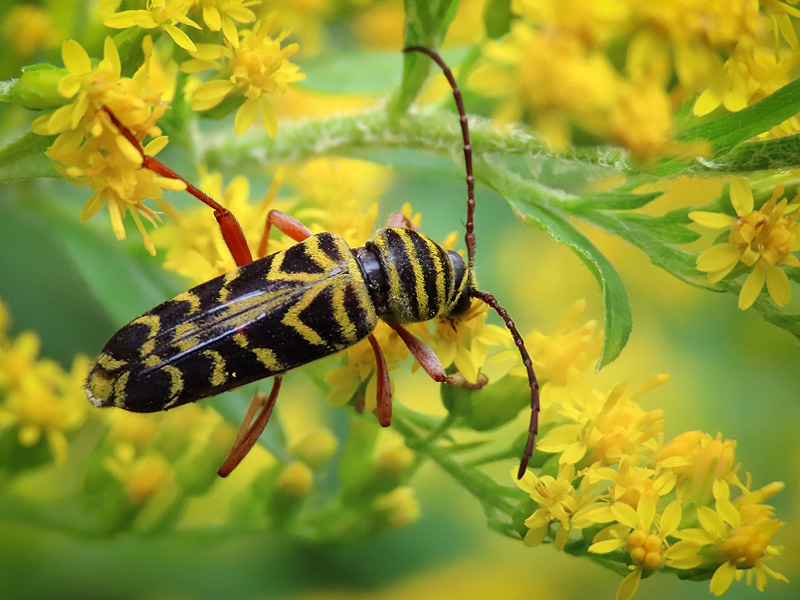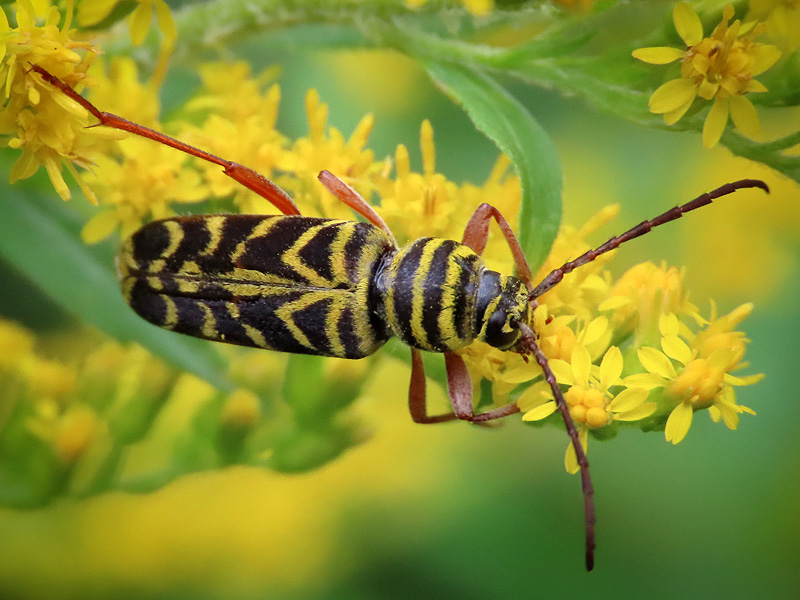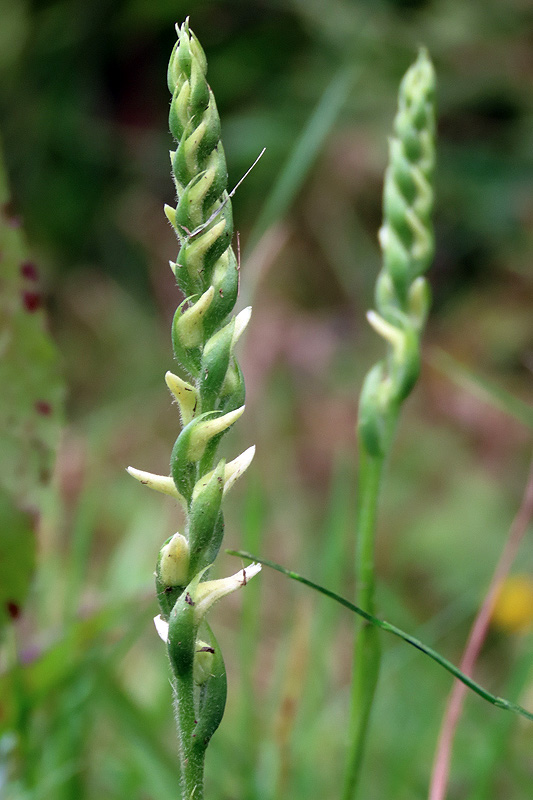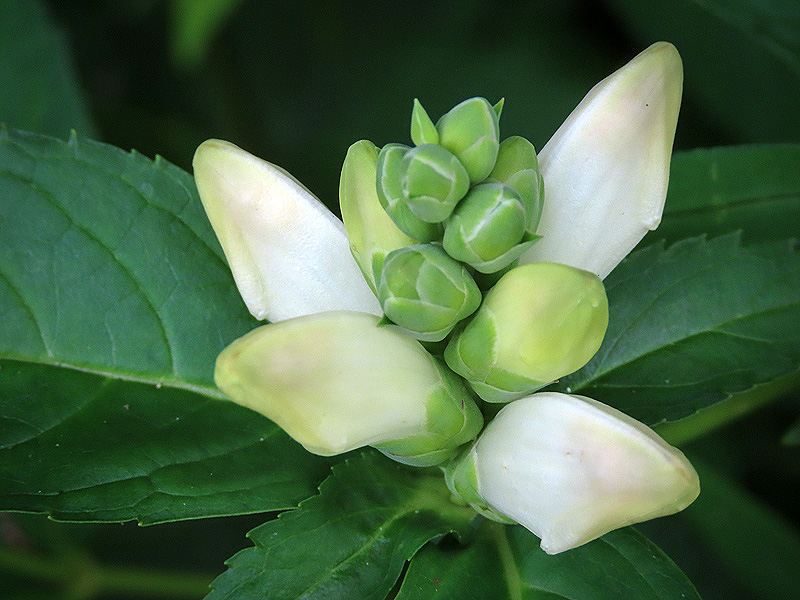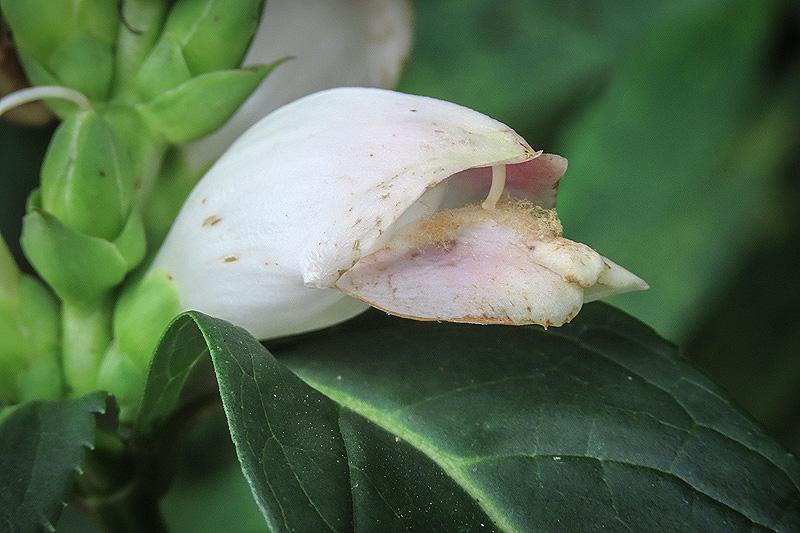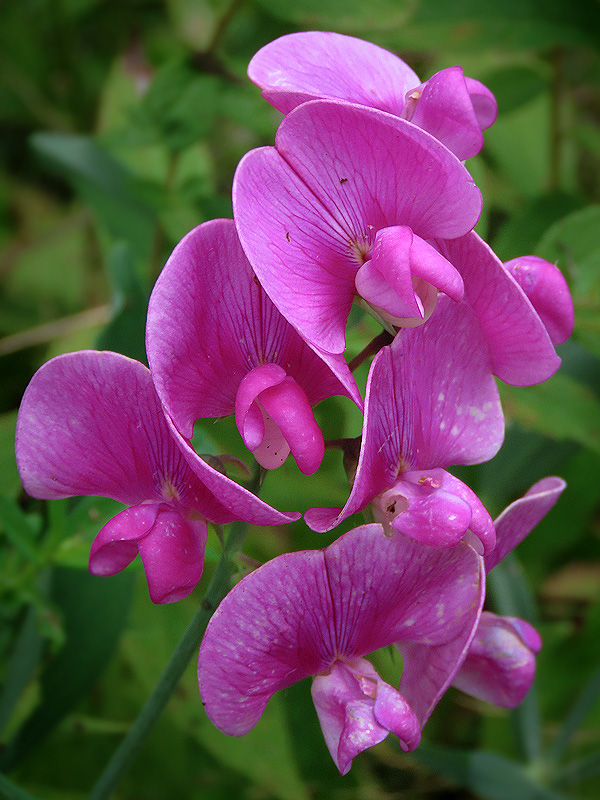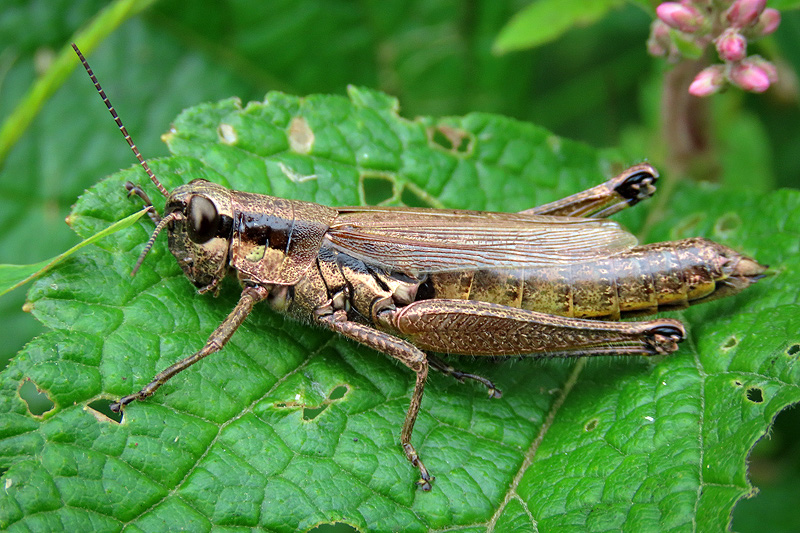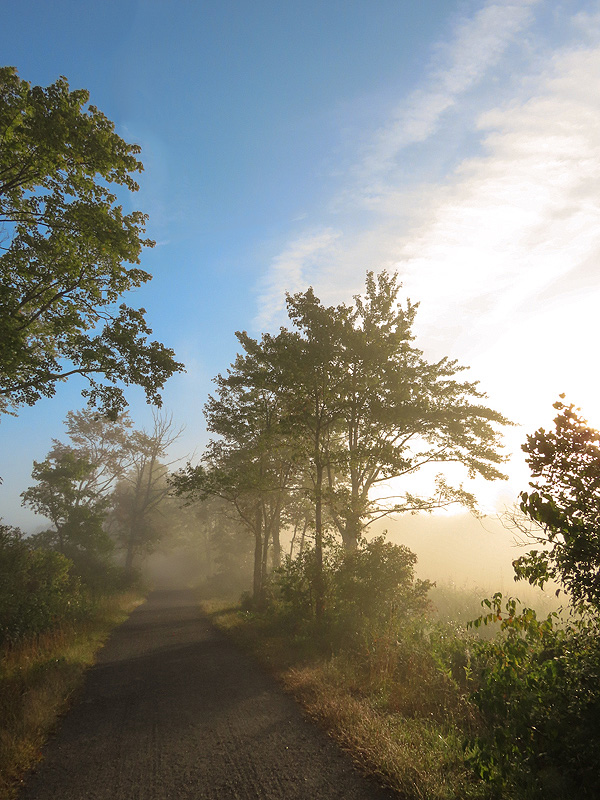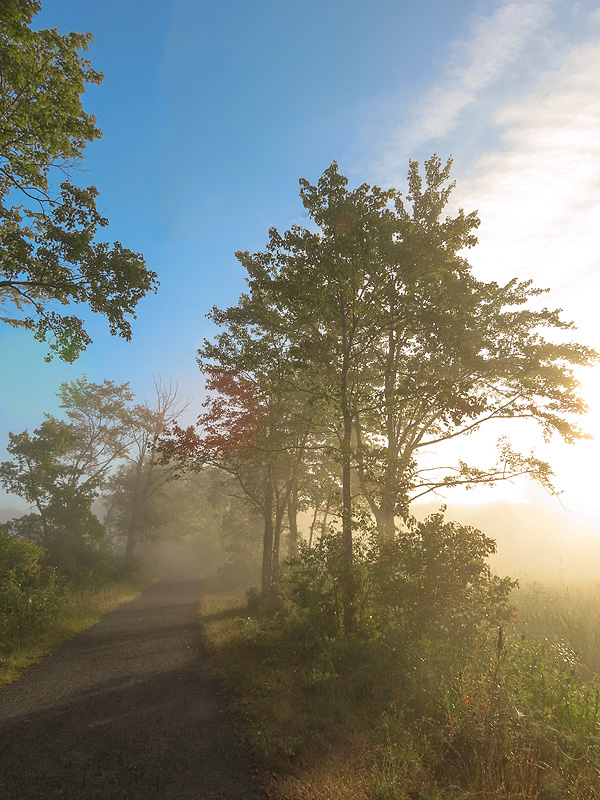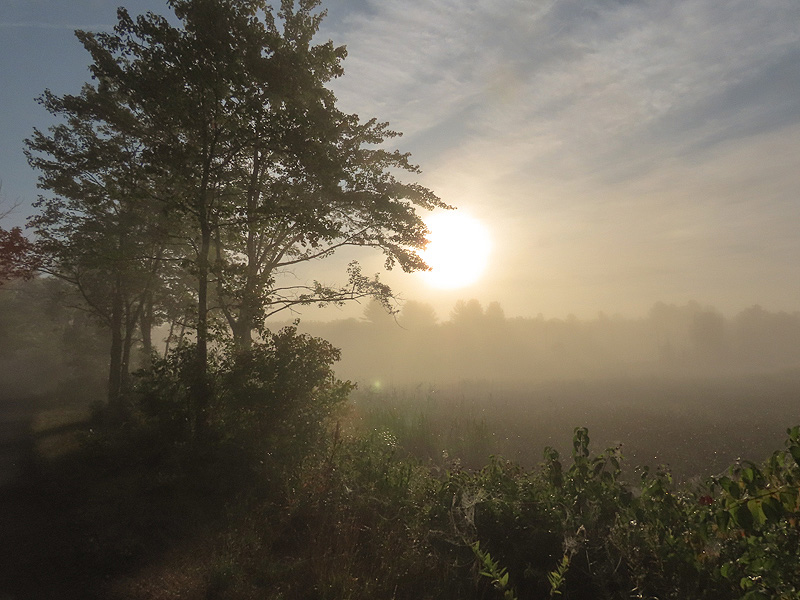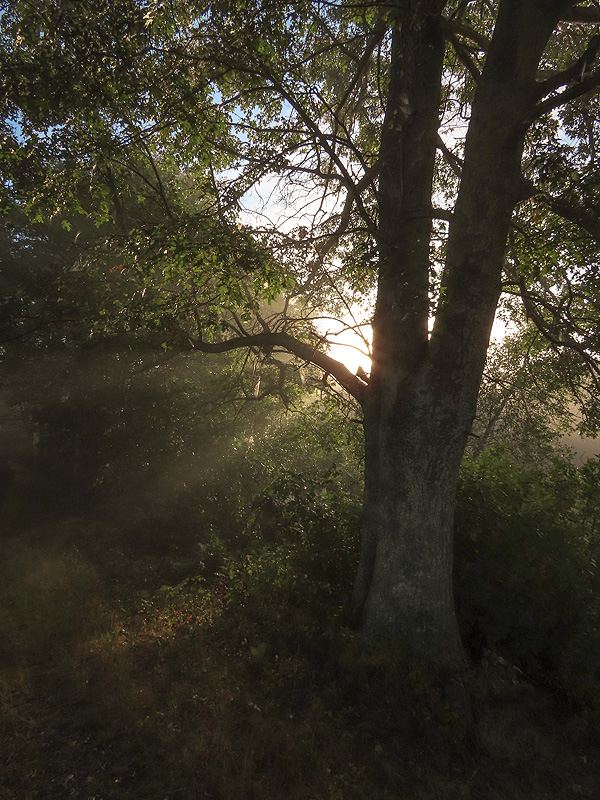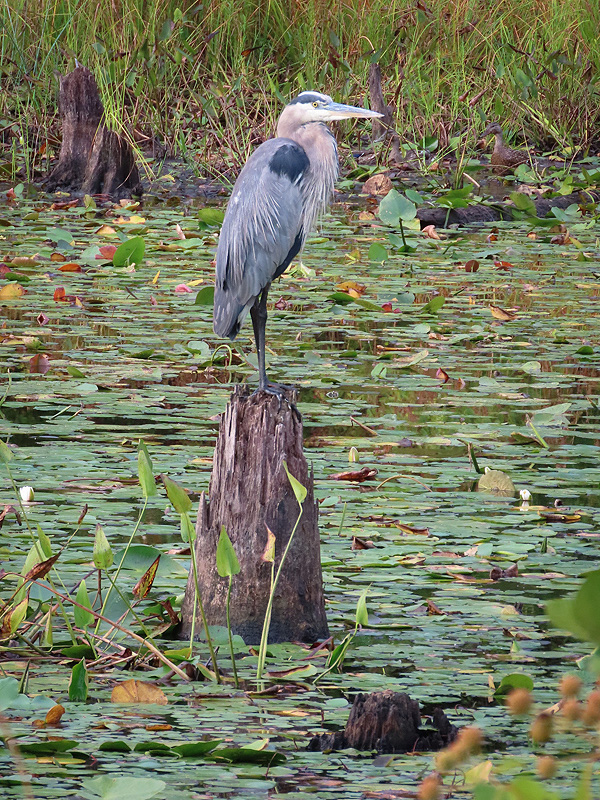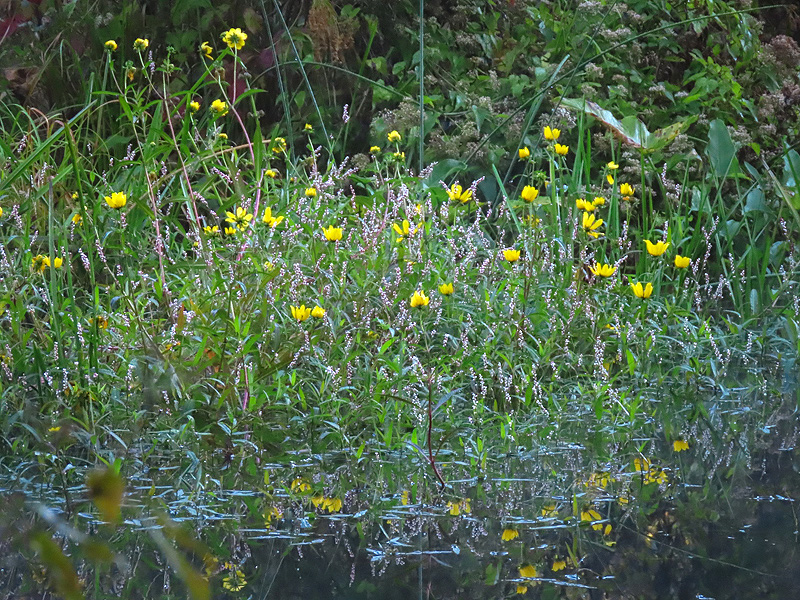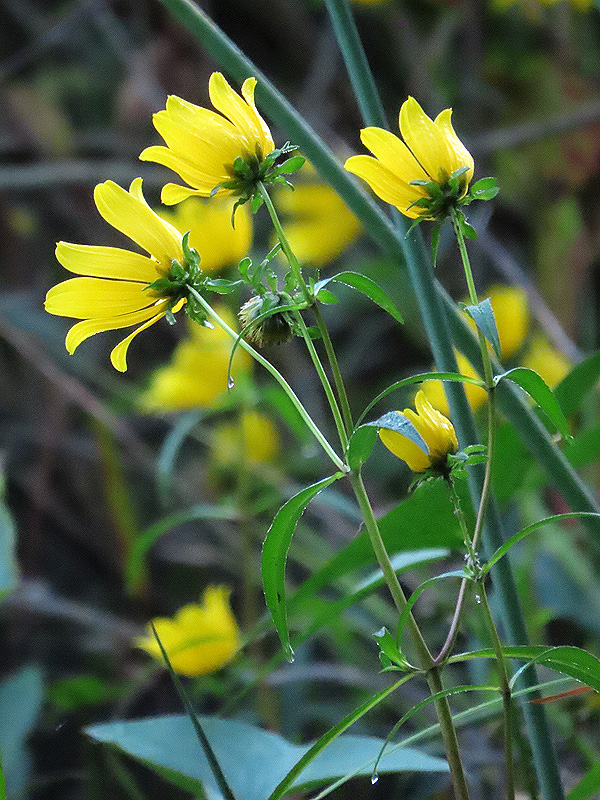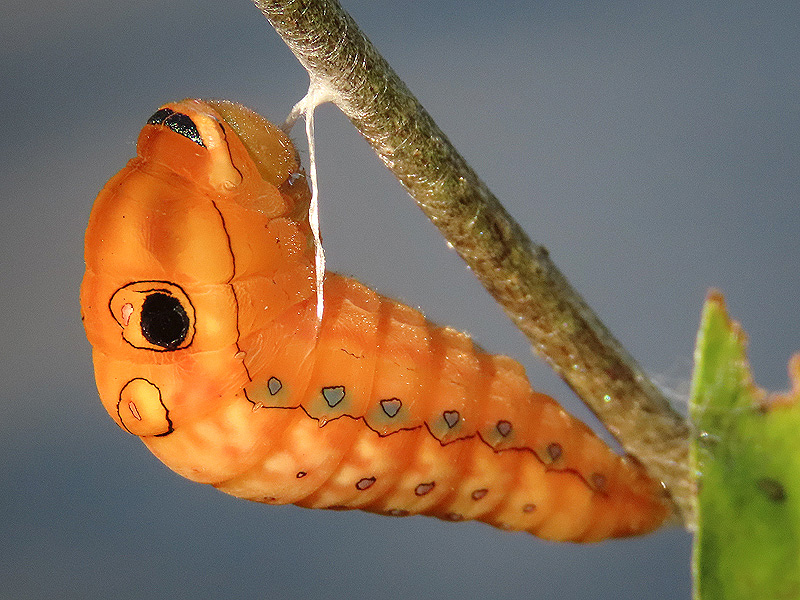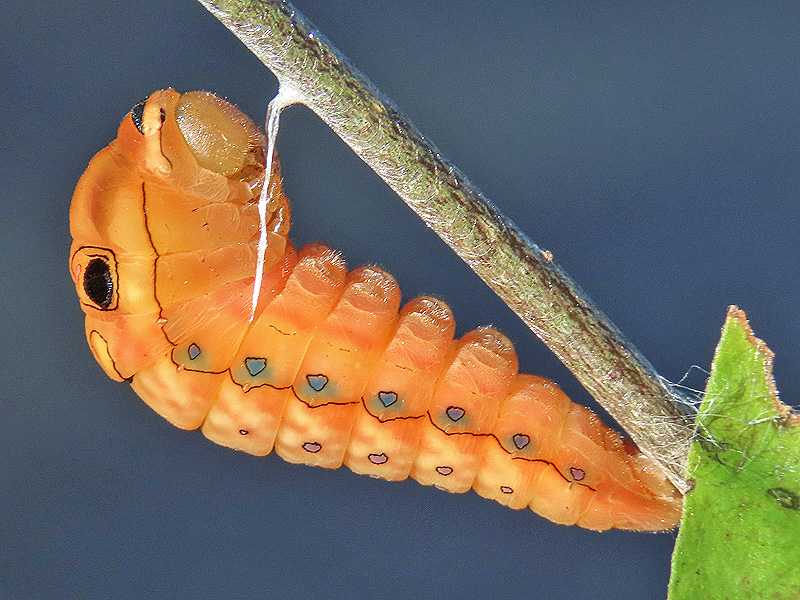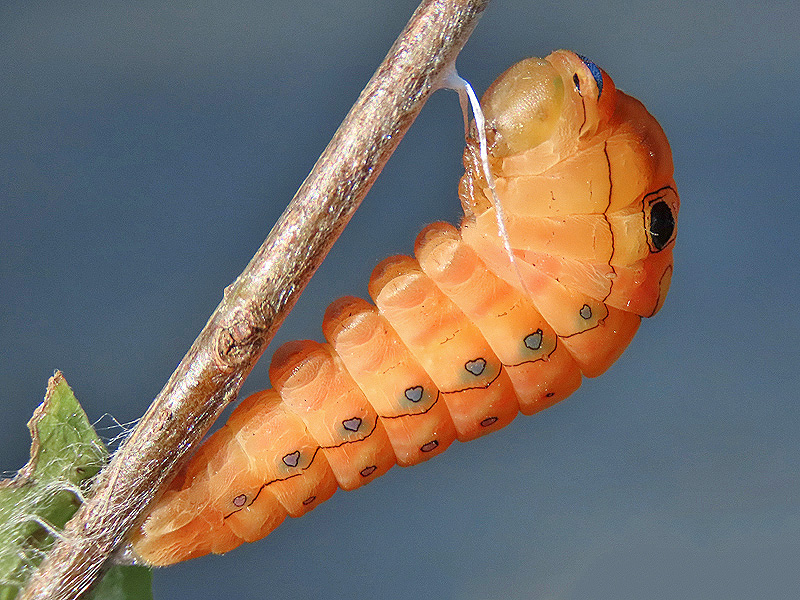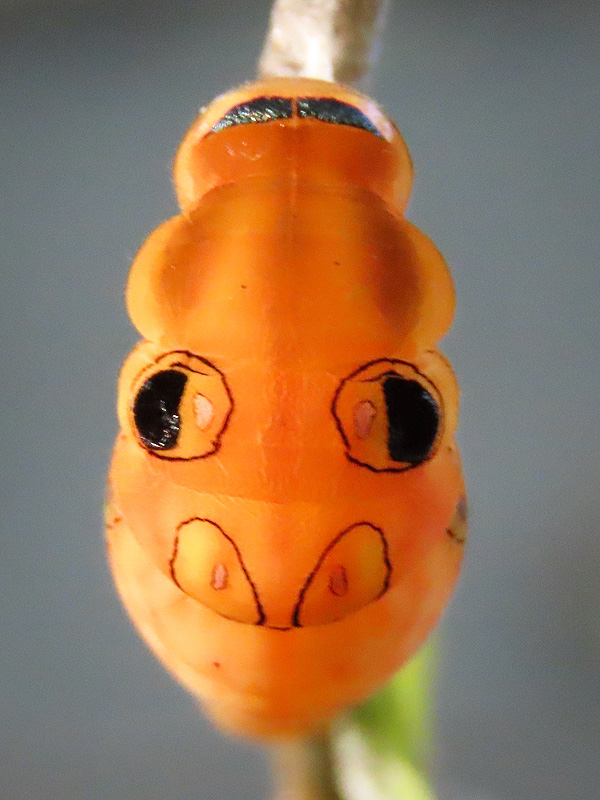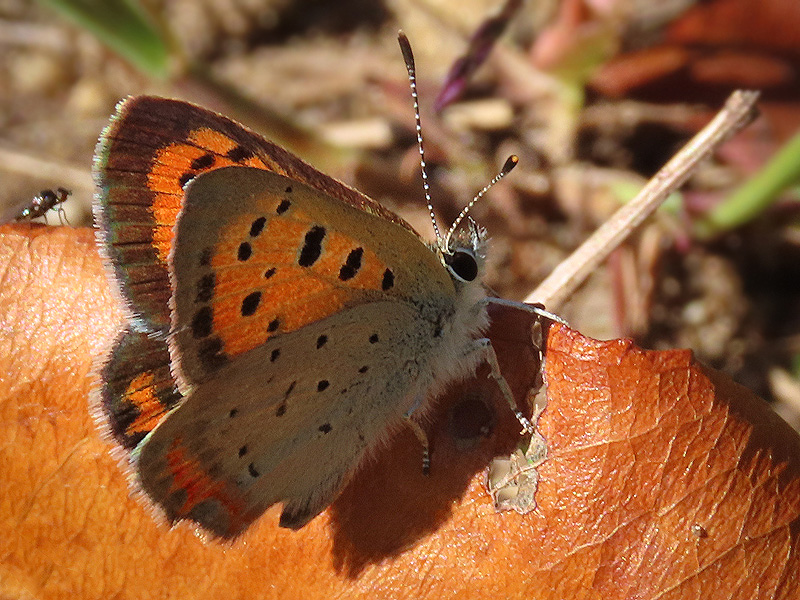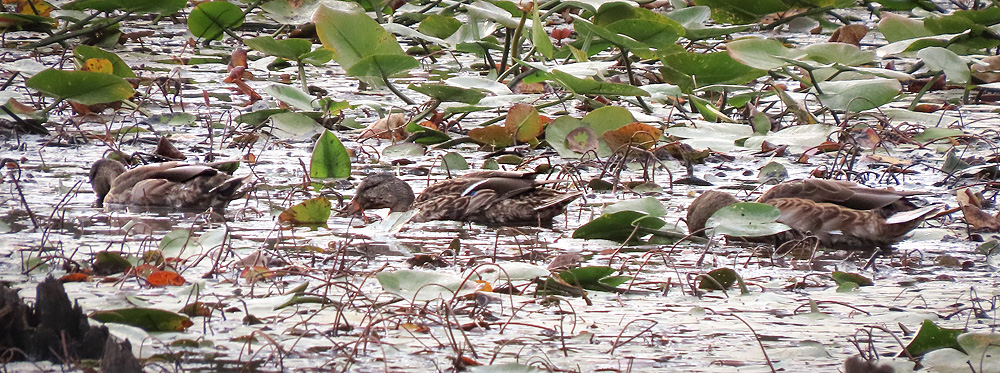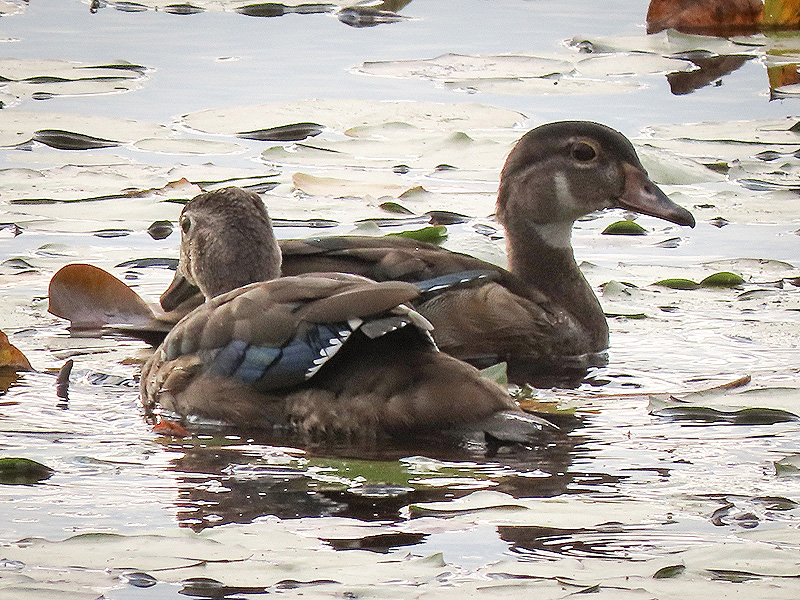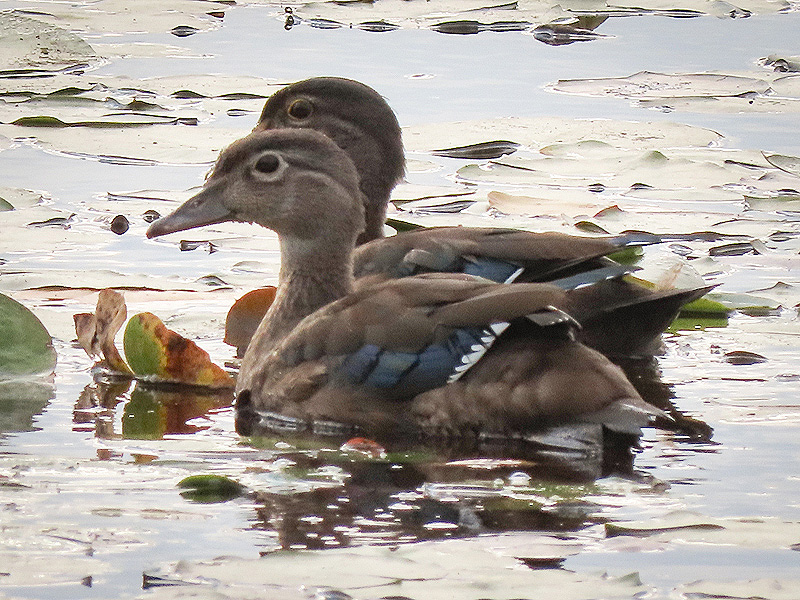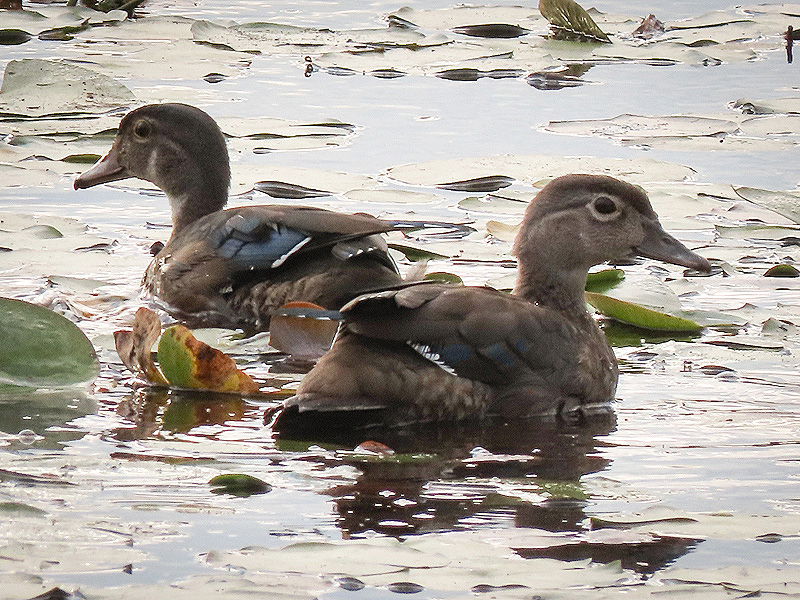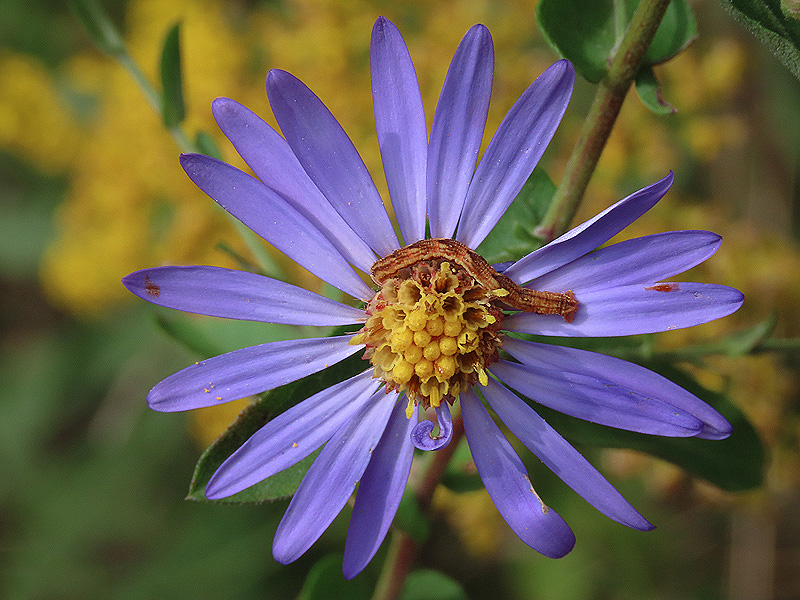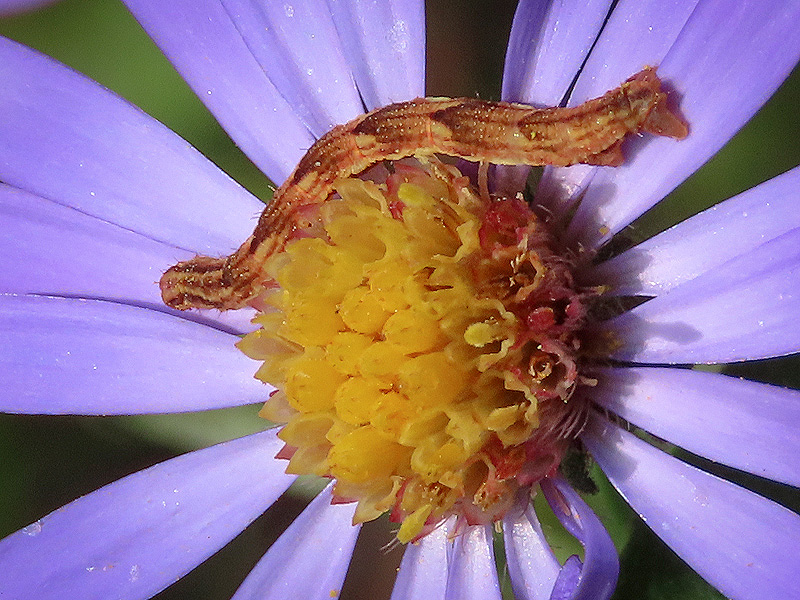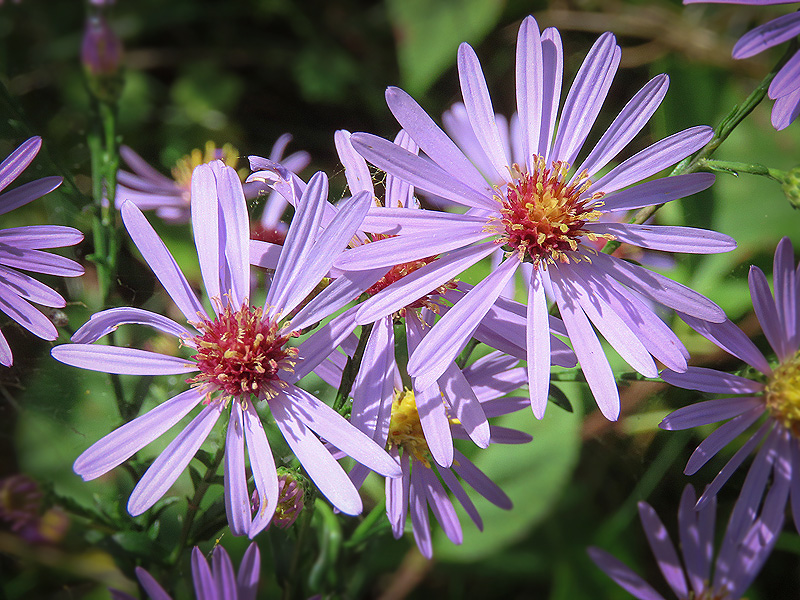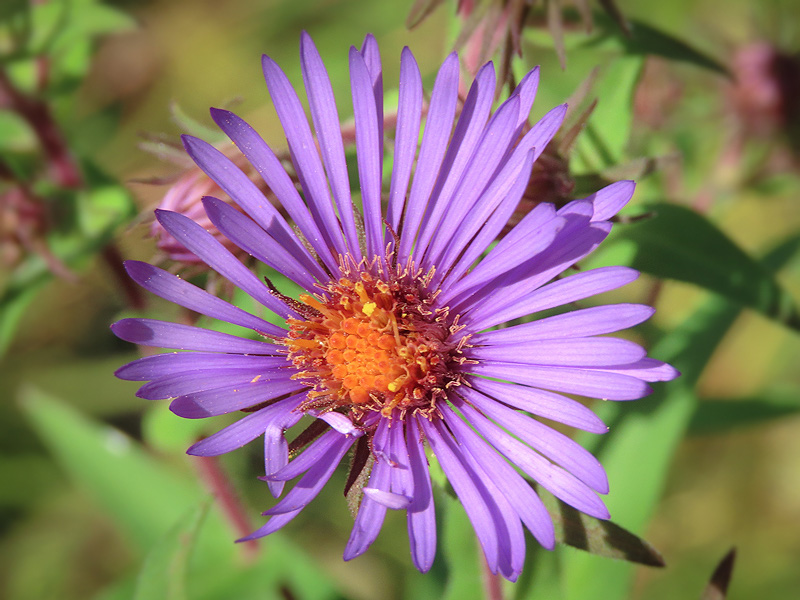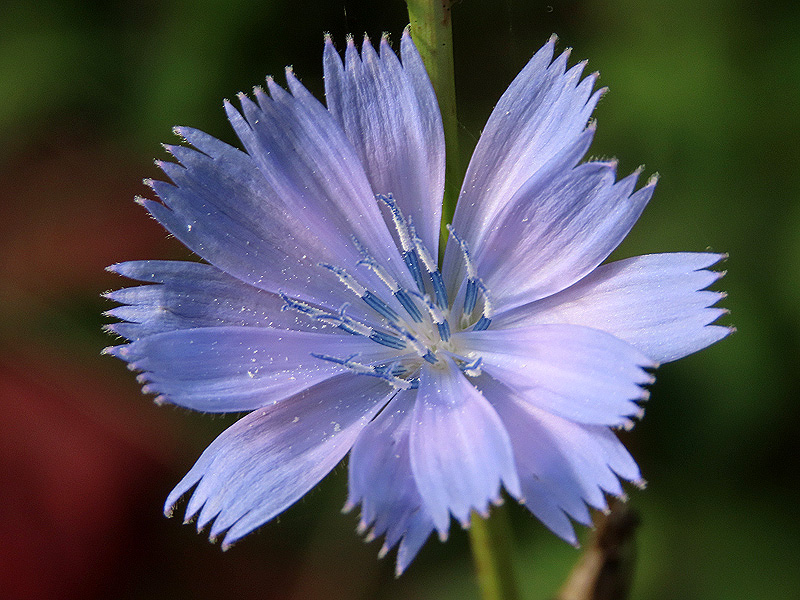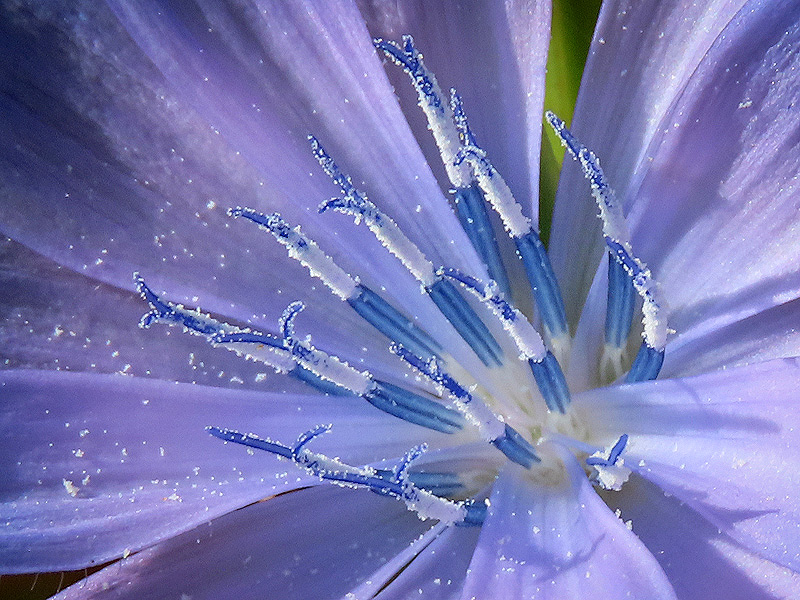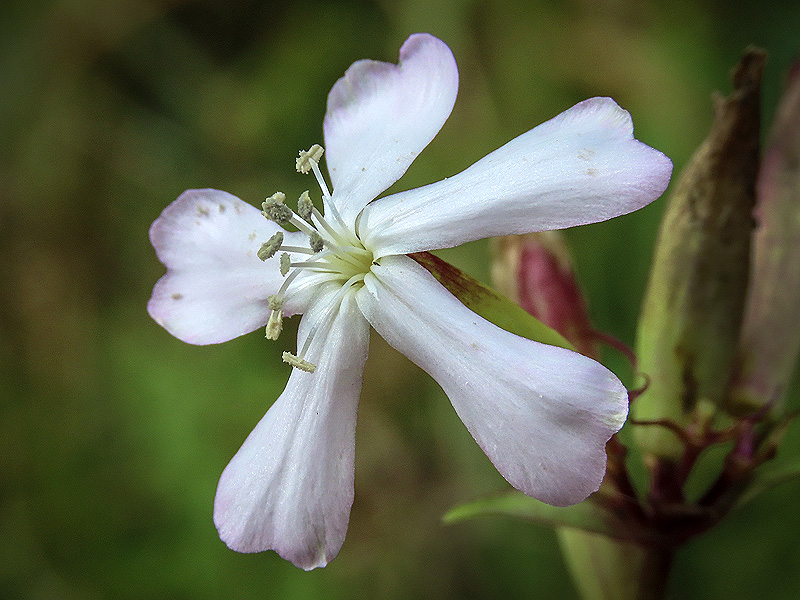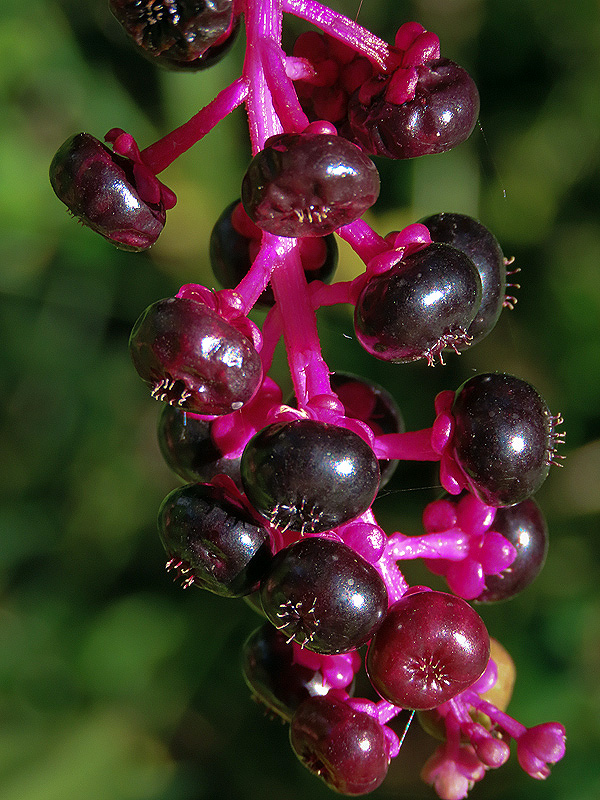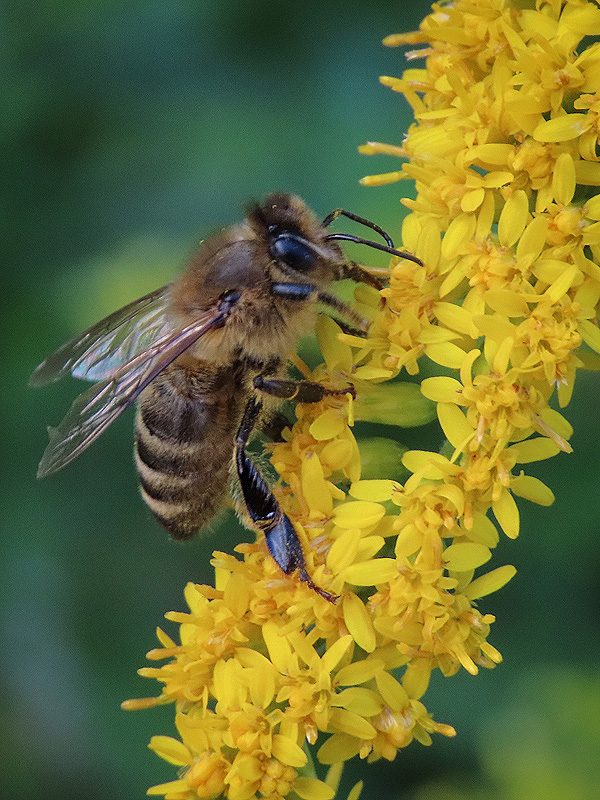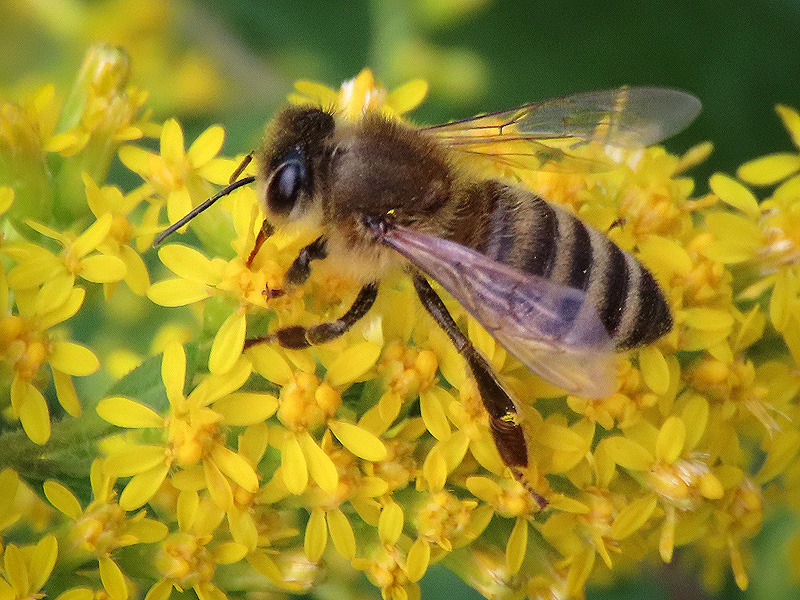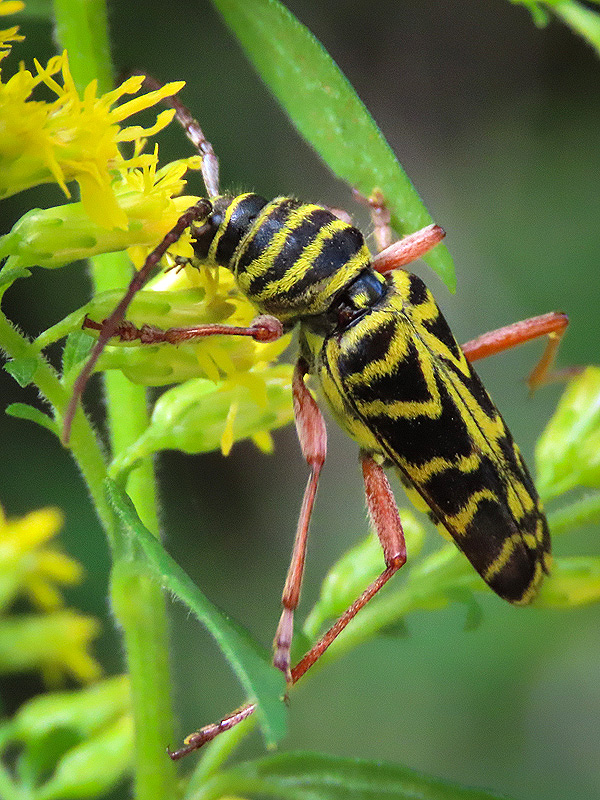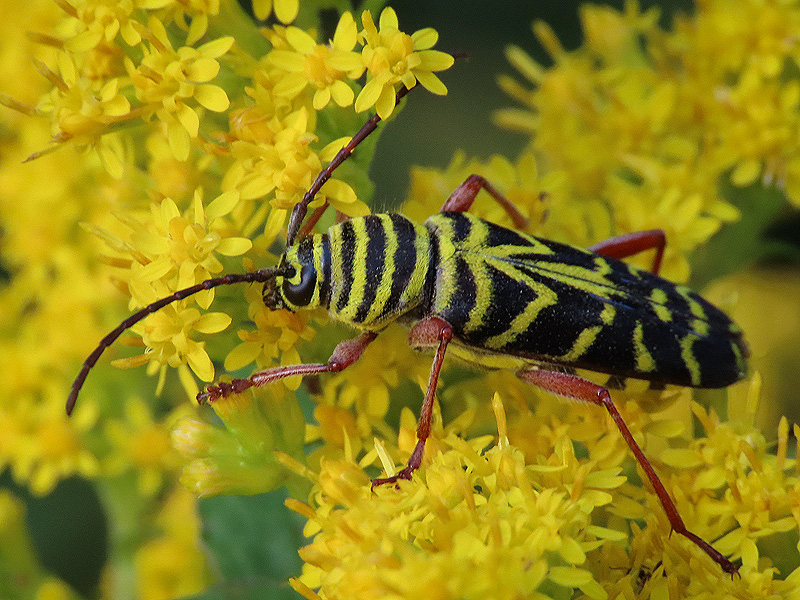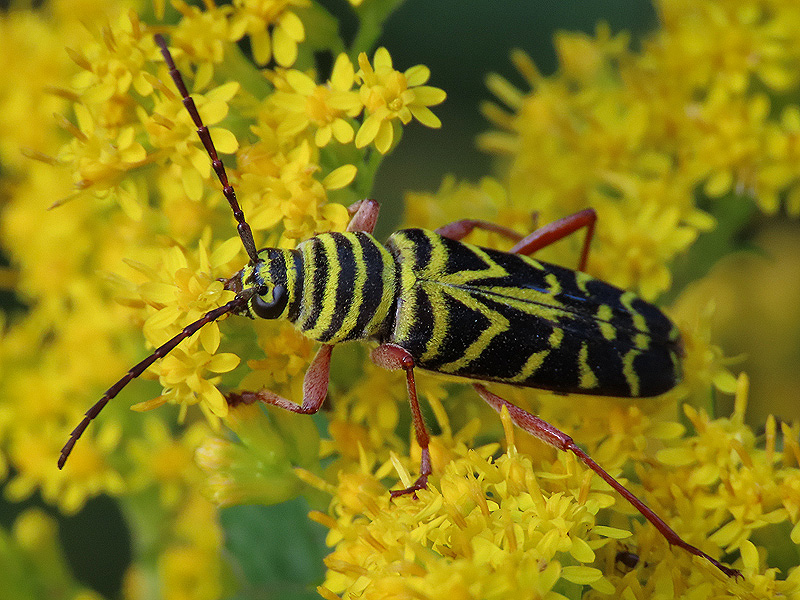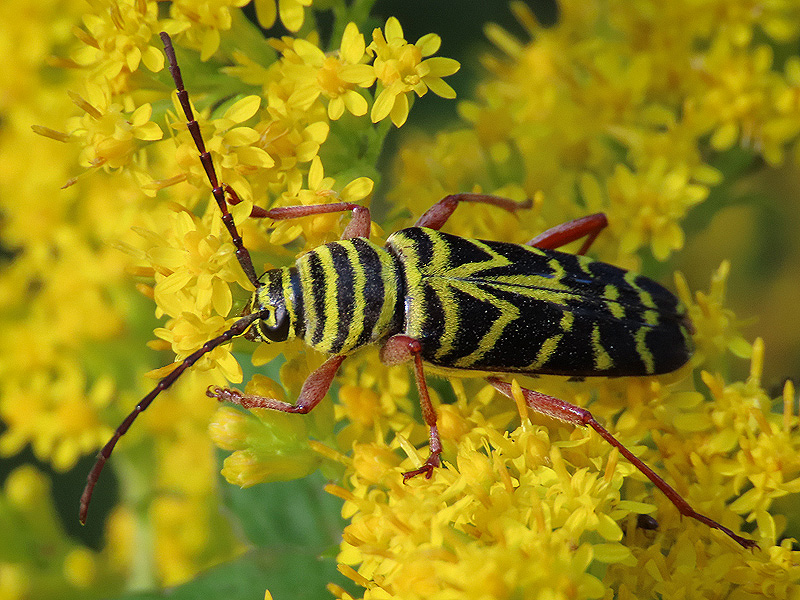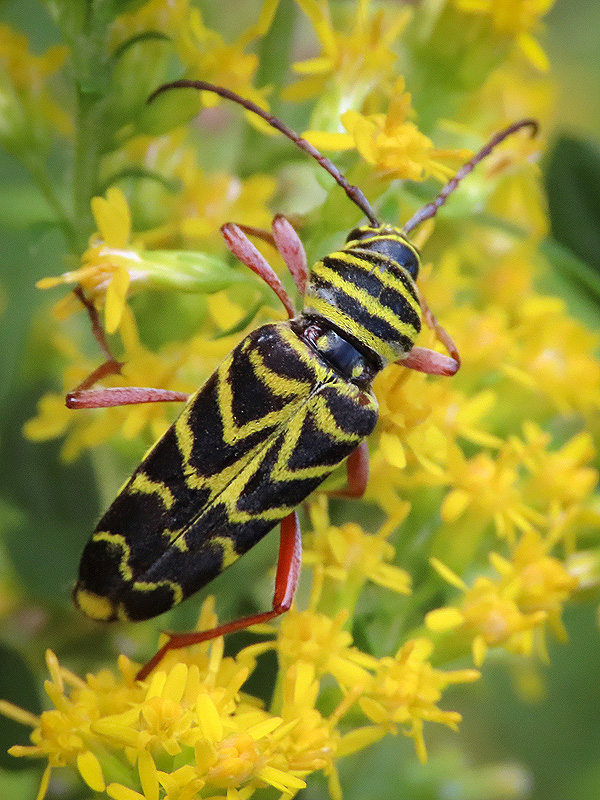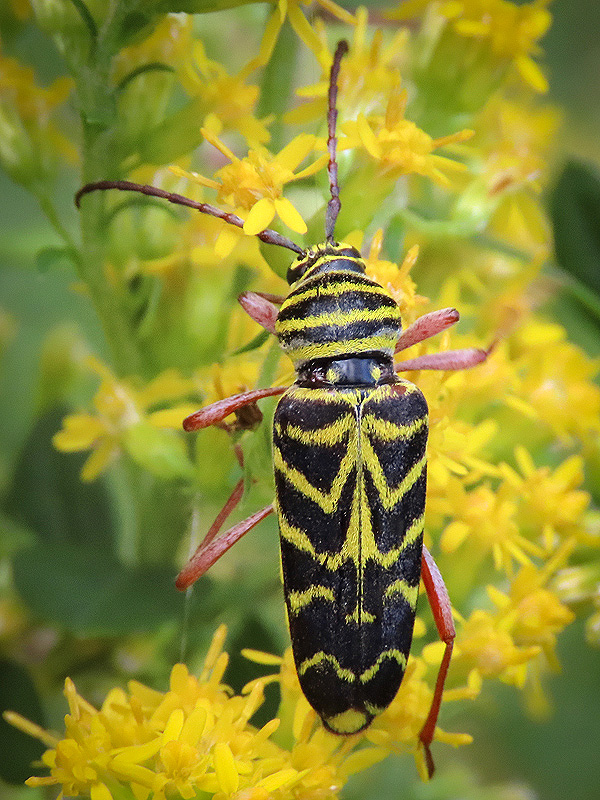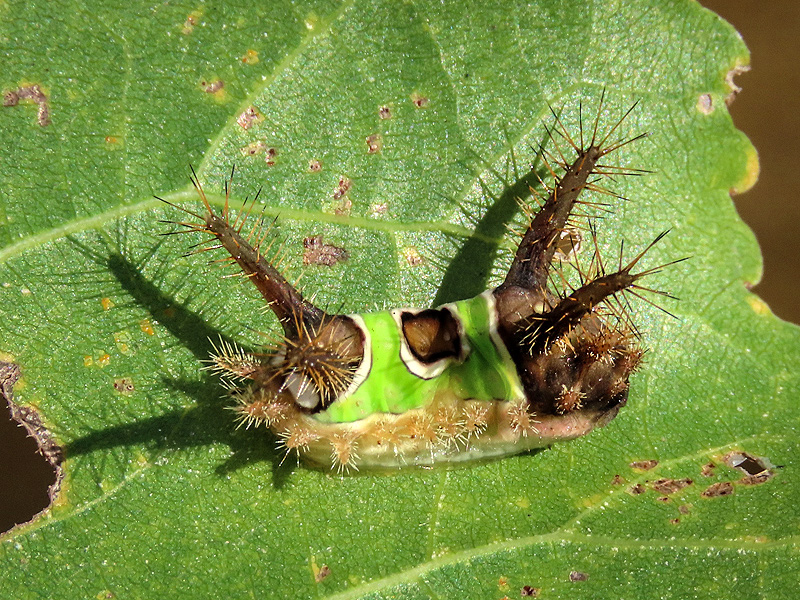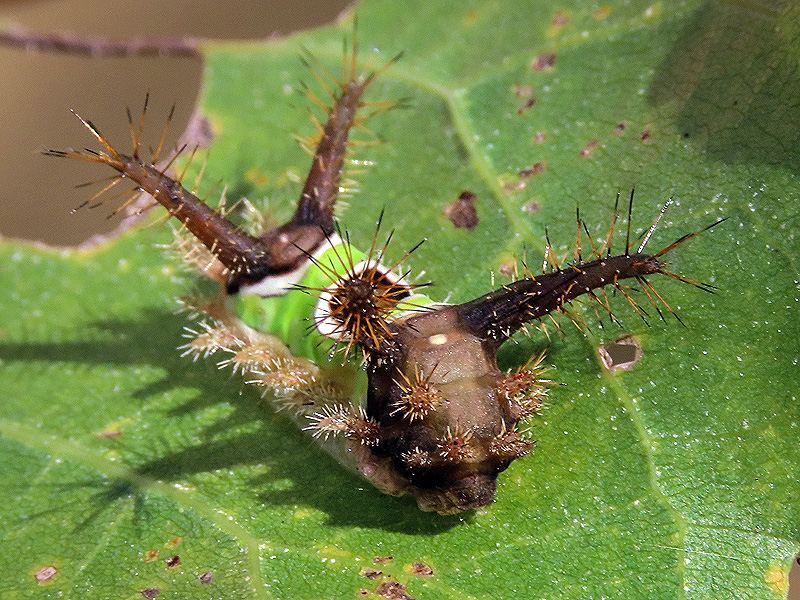Along the Air Line... 2019 - Summer, Part 14 The Air Line Trail in Eastern Connecticut - Stan Malcolm Photos |
HOME: Air Line... 2019 Pages Menu Stan's FlickR Albums |
September 14th. Water level on the south side of Raymond Brook Marsh the lowest I've seen in years. Normally this stump is submerged to just below the dark stained wood at the top. |
The water level is below where I saw it draining beside the culvert several weeks ago. |
Closed Gentians (Gentiana andrewsii) with fall colored Virginia Creeper (Parthenocissus quinquefolia). |
|
|
One of two Green Herons (Butorides virescens) that briefly visited the marsh. |
|
At Cranberry Bog, a Locust Borer (Family Cerambycidae, Megacyllene robiniae). |
|
I thought all the Nodding Ladies'-tresses orchids (Spiranthes cernua) were gone from near Cranberry Bog. Glad to find two plants in bud, though in a vulnerable spot. |
A nice patch of Turtlehead (Chelone glabra) there too. |
The flowers don't age well. |
A few Sweet Peas (Lathyrus odoratus) still blooming. |
I'm not sure of this Grasshopper's ID so will stick with the Family Acrididae. |
September 15th. Fog lifting. |
|
|
|
September 16th. The usual Great Blue Heron (Ardea herodias) on its usual stump. |
September 17th. What appear to be Sunflowers growing out of swampy soil are in fact a new plant for me, Large Bur-marigold (Bidens laevis). |
By the way, it's not a Marigold, not even close. So much for common names. |
The Spicebush Swallowtail (Papilio troilus) caterpillar is done feeding, has evacuated its gut, turned color, spun a silken girdle and tail end button, and will soon shed its skin to reveal a chrysalis inside. |
|
|
So much fun. |
A short afternoon walk between River Road and the Air Line Trail's Blackledge River bridge. American Copper (Lycaena phlaeus). |
September 18th. Three youngish Mallards (Anas platyrhynchos). Nice to see since most waterfowl have abandoned the marsh due to low water. |
Even nicer, several young male Wood Ducks (Aix sponsa). |
|
|
An afternoon walk on a short section of trail starting west from the Route 2 commuter lot on Route 149. Several kinds of Asters blooming, this one sporting an inchworm (Family Geometridae; I won't speculate on species). |
|
|
The only New England Asters (Symphylotrichum novae-angliae) I've seen so far. |
A few Chicory (Cichorium intybus) flowers still blooming. |
|
Even fewer Bouncing Bet (Saponaria officinalis) still in bloom. |
Pokeweed (Phytolacca americana). |
Honey Bees (Apis mellifera) were working the Goldenrod (Solidago sp.). |
|
Locust Borers (Megacyllene robiniae) were common on the Goldenrod too. |
|
|
|
|
|
Saddleback Caterpillar (Acharia stimulea). Evil. Hollow poison filled hypodermic spines produce a painful rash. |
They often rest on the undersides of leaves, out of sight. Brush against one and you'll be sorry. |
